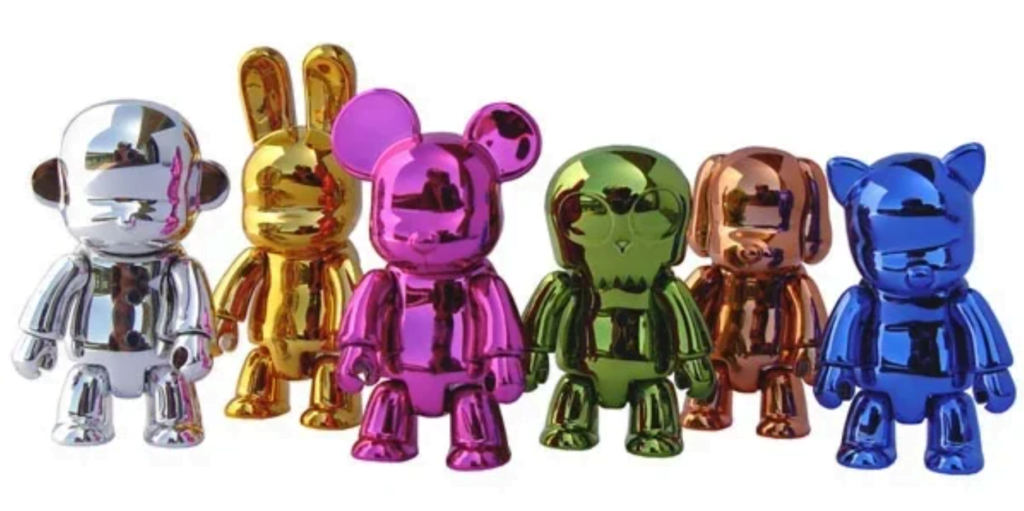Understand the Brand and Purpose
Before diving into mascot design, it’s crucial to define the core values and goals of the brand. The mascot, being a brand ambassador, should align with the brand identity and cater to specific target audiences. Consider the following
Define Brand Identity
The choice of a mascot often depends on the core traits of the brand and the target audience. Examples include:
An animal with leadership, stability, and trustworthiness, or a creative cartoon character. For instance, Snoopy for MetLife represents a friendly and trustworthy corporate mascot.
Corporate Brand Identity
Choose a mascot related to the product's features. Tony the Tiger for Kellogg's is a robust tiger representing breakfast cereals.
Product Brand Identity
Individuals may opt for a cartoon character representing their distinctive style. Michael Jordan's brand uses the Jumpman logo as a mascot.
Product Brand Identity


Friendly, approachable images emphasizing reliability and warmth. Geico's Gecko is an example of a service brand mascot.
Service Brand Identity
Bright, fashionable mascots that attract attention. Ronald McDonald for McDonald's represents a vibrant and friendly image.
Retail Brand Identity
Choose a mascot representing social responsibility and positive impact. The World Wildlife Fund's panda logo symbolizes environmental conservation.
Social Brand Identity
Determine the Mascot's Purpose
Comprehensive consideration of brand traits, goals, audience expectations, and the unique role the mascot plays in brand communication. Clear purposes help ensure the mascot’s maximum effectiveness.


Align with the Target Audience
Ensuring the mascot aligns with the target audience is a key factor in creating a successful mascot design. Consider:
In-depth understanding of the characteristics, interests, and values of the target audience through market surveys, user feedback, and social media analytics.
Research Audience
The mascot should reflect the brand's positioning and core values. Is the brand high-end, professional, or fun and relaxed? The mascot's design elements and style should align with the brand image.
Reflect Brand Positioning
For diverse audiences, carefully choose language and cultural symbols to avoid misunderstandings. Consider aesthetic standards and concepts in international markets.
Language and Cultural Considerations


If the target audience includes children, the mascot's design should be child-friendly. Bright colors, a cute appearance, and simplicity make mascots more appealing to younger audiences.
Child-Friendliness
The mascot's design should align with the brand story, conveying brand ideals, history, and vision. It becomes a fun spokesperson, making it easier for the audience to understand the brand's core message.
Brand Story Consistency
Research and Inspiration
Studying existing mascot designs provides insights into industry trends and design elements. Drawing inspiration from relevant themes and fields lays the foundation for conceptualization. For example, consider the psychological impact of different colors to ensure the mascot’s color choice aligns with the brand image.


Conceptualization
In the early stages of mascot design, designers invest significant time and creativity in conceptualizing the mascot’s basic ideas. Key steps and considerations include:
Clarity in Symbolism and Metaphor
Define the brand image the mascot represents, including values, traits, and target audience. The mascot should align with the brand image.
Position Brand Image
Delve into the metaphorical meaning of the mascot, conveying symbolism and symbolic symbols. For example, a lion may symbolize courage and leadership.
Understanding Metaphor
Experiment with Different Elements
Mascot poses and expressions convey various emotions and messages. Experiment with different poses like standing, sitting, jumping, and expressions such as cheerful, confident, or friendly to explore the mascot's possibilities.
Poses and Expressions
Consider the mascot's features like color, shape, and size. These features should align with the brand image and metaphor, creating a unique and attractive image.
Feature Design
Draft Preliminary Design Concepts
Present preliminary mascot concepts through hand-drawn or digitized sketches. This helps materialize ideas and provides a foundation for subsequent discussions and modifications.
Hand-drawn or Digital Sketches
Offer multiple preliminary design concepts for team or client selection. Diversity aids in considering the mascot's image from different perspectives.
Diverse Selection


Feedback and Iteration
Solicit feedback from stakeholders, including the brand team and target audience. Continuously iterate the design based on feedback to ensure the mascot meets expectations and effectively conveys the brand message.
Internal Team Feedback
Showcase preliminary design concepts to the internal team, gathering feedback and suggestions. Internal team opinions help refine the design, ensuring the mascot resonates with the overall team.
Present Preliminary Designs
If possible, obtain feedback from clients or the target audience. Understand their views on the design to make adjustments that align with expectations.
Client or Target Audience Feedback
Test Scalability
Ensure the mascot maintains scalability across different sizes and applications. Evaluate its visibility and detail performance on various backgrounds.
Documentation and Style Guide
Document design specifications and create a comprehensive style guide. This ensures the mascot’s consistency and adherence to standards across various applications.




Release and Promotion
Plan the mascot’s unveiling, integrate it into marketing materials, and generate anticipation and excitement.


Post-Launch Evaluation
Monitor audience feedback, collect performance-related feedback, and assess the mascot’s impact on brand identity. Make necessary adjustments based on evaluations.
A Friendly Reminder
These 8 steps provide a detailed overview of the entire mascot design process, emphasizing its crucial role in brand construction and promotion. Encourage brand teams to consistently monitor the mascot’s performance and make adjustments when necessary, ensuring it consistently aligns with the brand image. The successful design of a mascot is not only an artistic expression but also a compelling storyteller for the brand.









